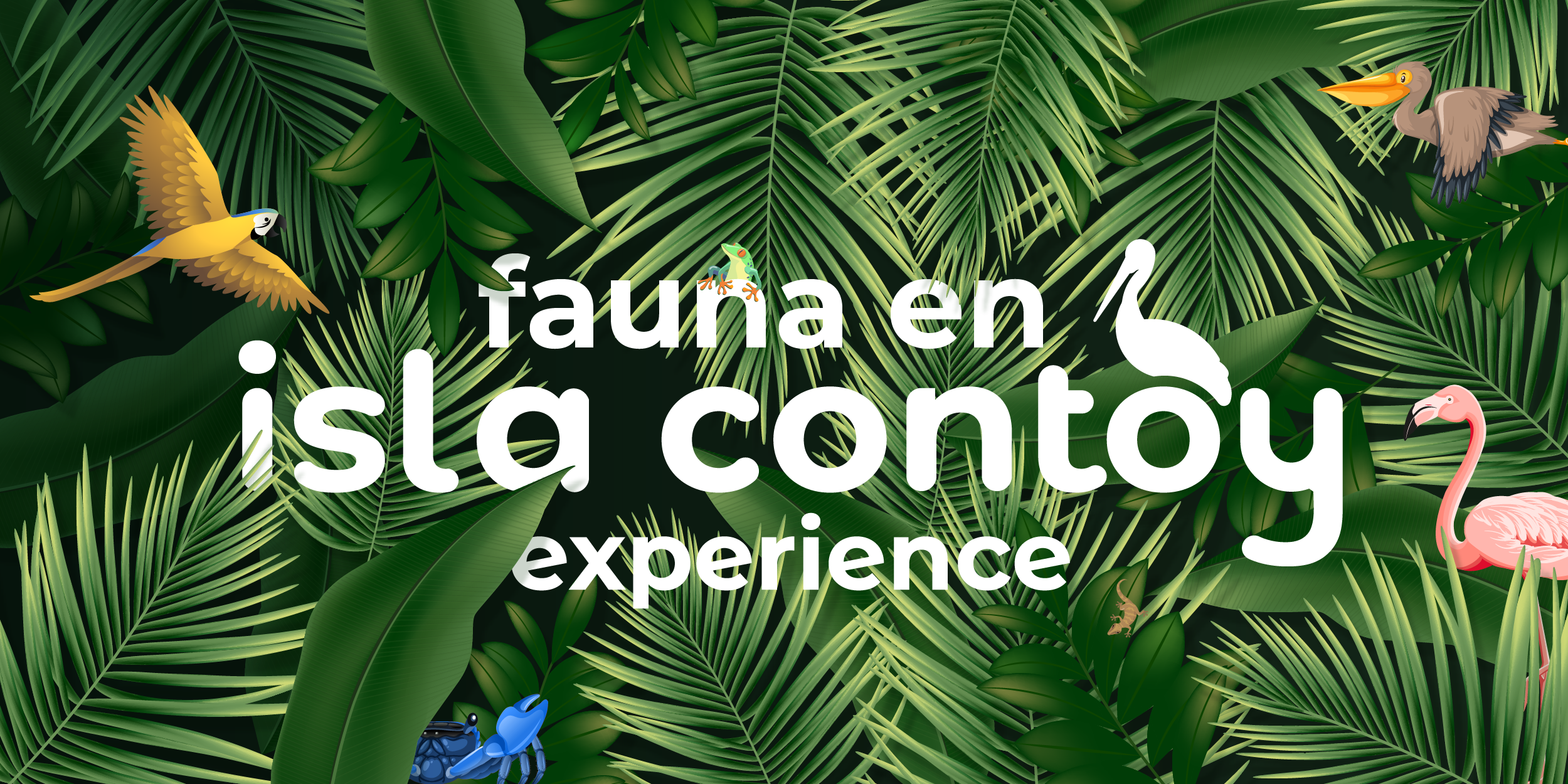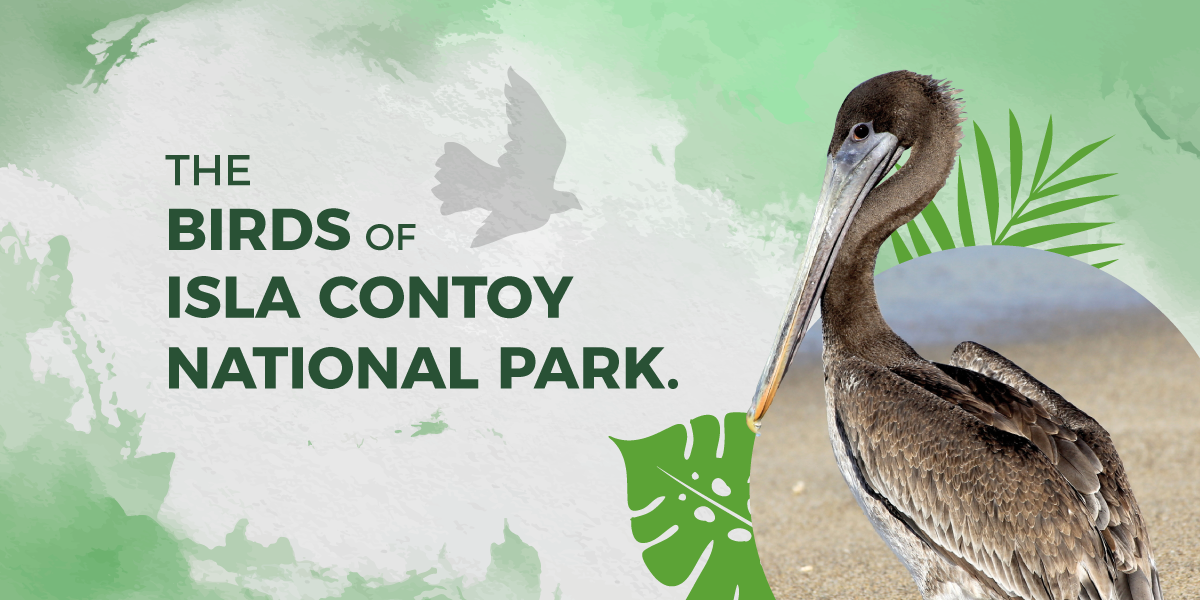
Mexico has its fair share of national parks in every part of the country. It enables flora and fauna to flourish in a protected sanctuary safe from harmful human interaction and pollution. As such, the Mexican federal government has designated protected natural zones to aid in conserving ecological hotspots.
The National Commission of Protected Areas (Comisión Nacional de Áreas Protegidas, CONAMP, for its acronym in Spanish) is the federal body managing and safeguarding national parks in the country. This commission has granted Isla Contoy the status of a protected natural zone since 1961.
Park rangers and the Mexican government protect this natural area, home to many species. Birds are the most abundant and researched animals on the island.

This National Protected Area amidst the Mexican Caribbean is home to amazing wildlife.
Isla Contoy: A birding paradise
With its tiny landmass, it may come as a surprise that Isla Contoy has a huge bird population, harboring about 173 bird species, each with different characteristics, ranging from dazzling vibrant colors to the amusing behavior that each bird displays.
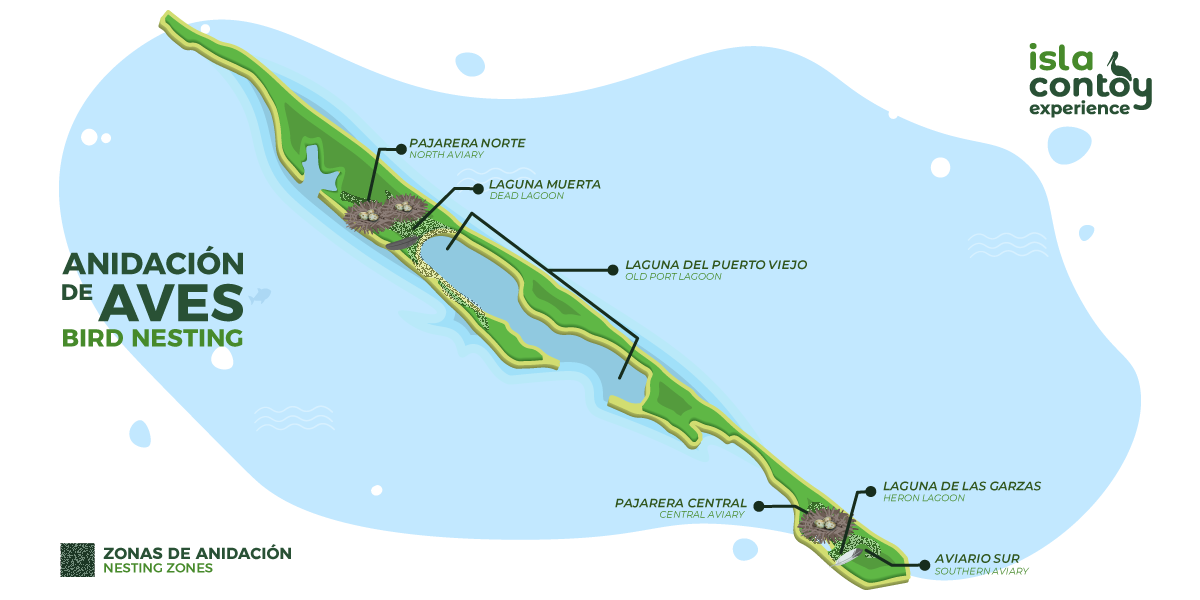
As such, Isla Contoy is considered the best seabird sanctuary of the Mexican Caribbean, a true gem where you can enjoy birding in a place where you don’t need to walk large distances to sightsee birds perching on the trees.
But (because there is always a but), don't expect a bird-watching tour attached to your Isla Contoy experience since the real purpose of the sanctuary is taking care of the species more than giving the tourists a bird show.
Isla Contoy bird sanctuary status gives birds a safe place to place a nest and recover their strength on their way to faraway lands. Thus, this island is paramount to keep the migratory bird population steady.
What types of birds can you find on Isla Contoy?
MOST COMMON BIRDS IN ISLA CONTOY
Coming to Isla Contoy means you will be amazed by the number of bird species in the place. You may want to join a qualified park ranger who can answer all your questions regarding the wildlife of Isla Contoy.
COMMON SPECIES IN THE ISLAND
- Brown pelican (Pelecanus occidentalis)

If you are into big birds, you’ll be delighted to meet the brown pelicans, known for eating fish, amphibians, and crustaceans, by diving swiftly into the sea. These huge birds make them especially easy to spot from far away. They are true protagonists. Thus, you will always see them perching on piers or at the top of tall structures.
- Double-crested cormorant (Phalacrocorax auritus)
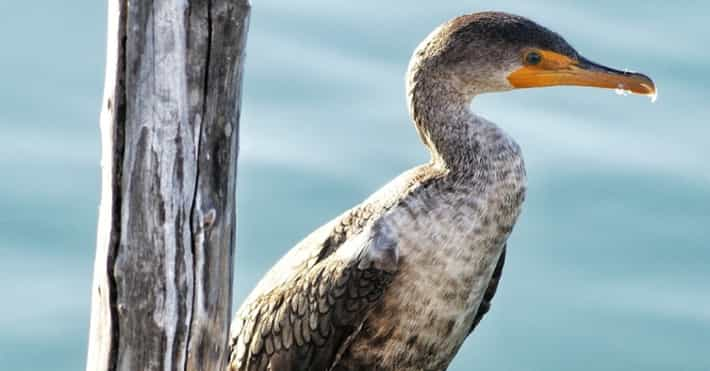
Another of the most abundant species in the park. During the breeding season, the male double-crested cormorant will catch your attention with their black jacket and a small double crest of white feathers on the head. They are known to live in Mexico, the United States, Canada, the Bahamas, Turks and Caicos, and the Caiman Islands.
Western Osprey (Pandion haliaetus)

Hawks are known to live on land, but this hawk, the Osprey, depends on bodies of water to gather food and hunt. They are known to be found in every continent except Antarctica. Watch how swiftly they can hunt and eat fish from the sea and nearby lagoons.
- Roseate spoonbill (Platalea ajaja)
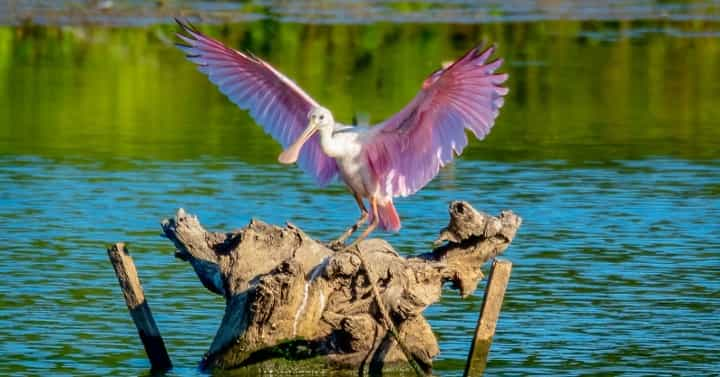
You don’t need to travel further away to see spoonbills. These uniquely colored birds will surely contrast with their environment with their sheer pink plumage, long legs, and big bill. They can sleep standing and like to stay in salty environments.
- Green heron (Butorides virescens)
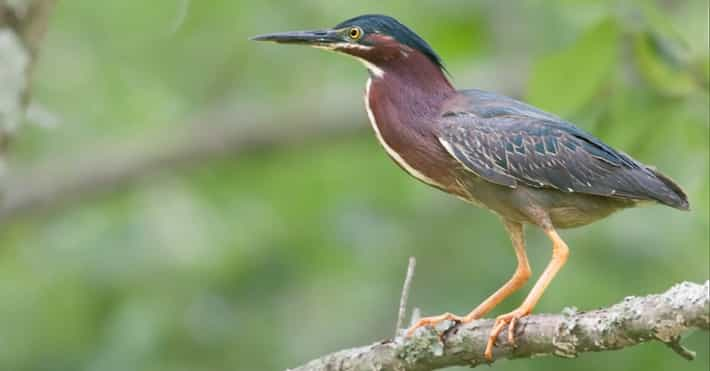
These relatively small birds measure about 44 cm, and their necks are pulled tight against their bodies, making them look neckless, but, oh, surprise! That neck can reach double its size, something fun to watch if you can spot them. You can find these birds in Mexico and the eastern United States.
- Reddish egret (Egretta rufescens)
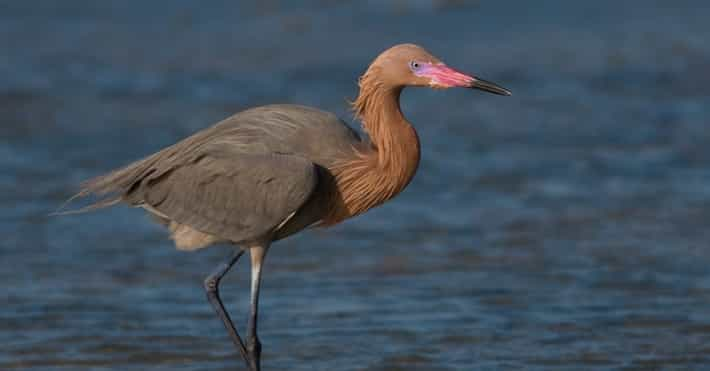
These birds can reach around 82 cm in length, have a 125 cm wingspan, and weigh about 1 kg. Due to their graceful and lightning-fast hunting skills, they are known as the Tyrannosaurus rex of shallow waters, eating everything on their path, including fish, frogs, crustaceans, and insects. This species is subject to special protection because it is one of the scarcest herons in North America and is particularly sensitive to coastal development.
- Least Tern (Sterna antillarum)
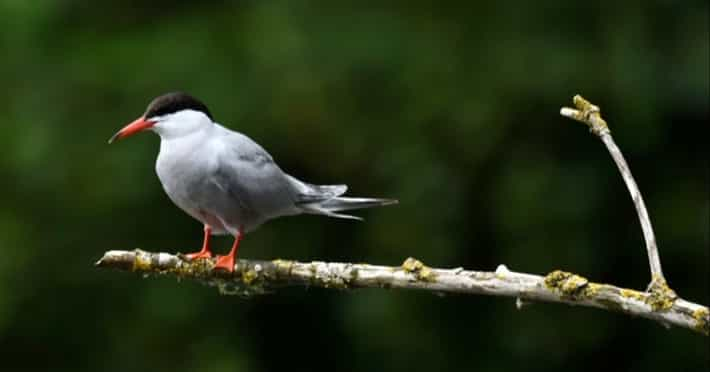
These small cute birds with a fashion eyeshadow are known for the black band surrounding their heads. Their nests are placed over the beach sand and can blend easily with it. The chicks usually roam on the beach while their parents return with small fish to feed.
White-crowned pigeon (Patagioenas Leucocephala)
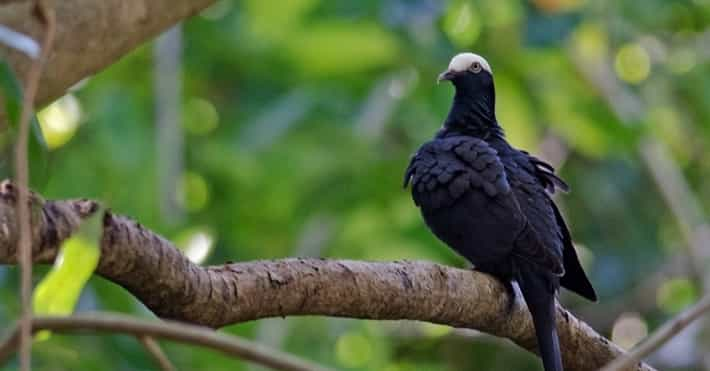
These birds are only found in the Caribbean, including Mexico, Cuba, Haiti, Dominican Republic, Jamaica, and other smaller islands. Unfortunately, this bird is endangered by hunting and loss of habitat and because they tend to crash into man-made structures. Fortunately, they are safe on Isla Contoy.
MIGRATORY BIRDS
- Brown booby (Sula leucogaster)
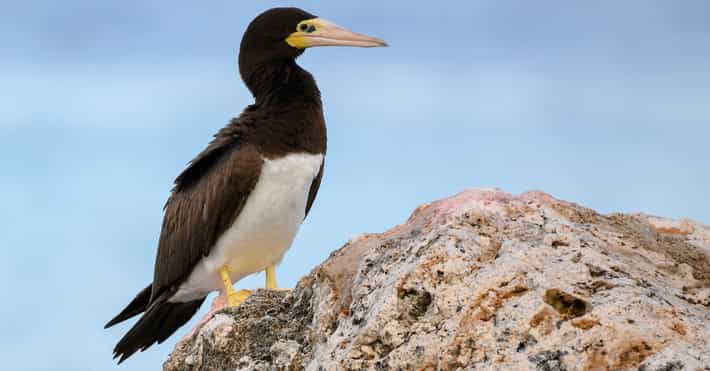
These birds travel vast regions to nest; their uniquely colored blue eggs are hatched in Mexico and the Caribbean. They are known to use sea debris as a building block for their nest, so expect to see them built with plastics and driftwood more often than actual nest twigs.
- Sooty tern (Onychoprion fuscatus)
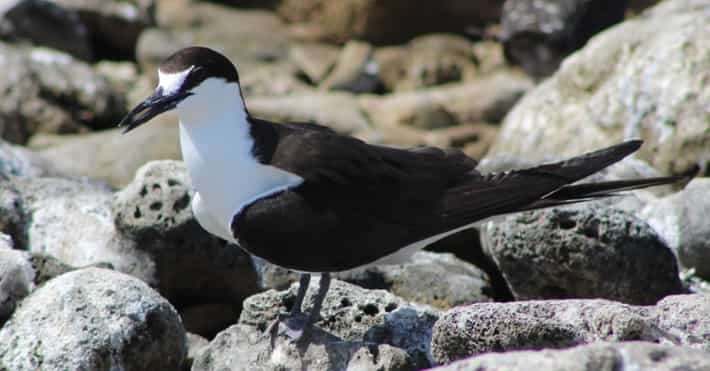
It is a bird measuring about 40 cm with a black head below the eyes and wears a white feather scarf. It usually spends long periods at sea, and in the cold season, it approaches tropical areas. They can live for up to 32 years.
- Peregrine falcon (Falco peregrinus)
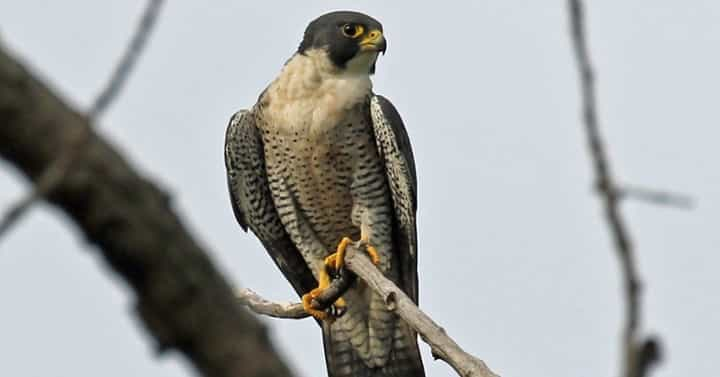 The Peregrine falcon can be found all over the world. They fly south when the winter strikes the Northern Hemisphere. They can weigh up to 1 kg. They are known to be avid hunters of pigeons, doves, songbirds, and shorebirds. Some of them have adapted to living in a human environment. The peregrine falcon speeds up to 400 km/h when swooping to hunt its prey.
The Peregrine falcon can be found all over the world. They fly south when the winter strikes the Northern Hemisphere. They can weigh up to 1 kg. They are known to be avid hunters of pigeons, doves, songbirds, and shorebirds. Some of them have adapted to living in a human environment. The peregrine falcon speeds up to 400 km/h when swooping to hunt its prey.
- Merlin (Falco columbarius)
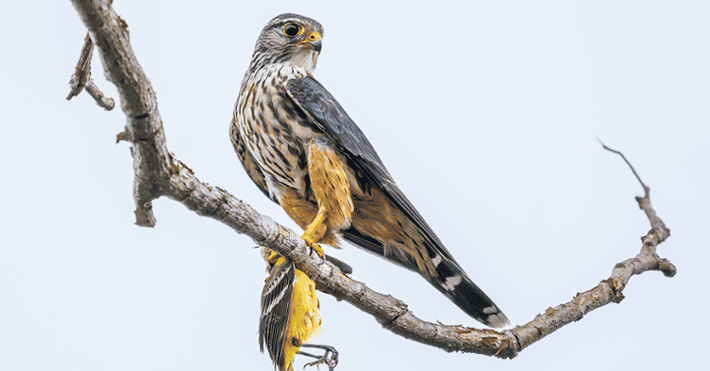 These birds can be found all over the Northern Hemisphere. They travel south to avoid winters. They feed on all sorts of smaller birds, including chicks, and are known to thrive in harsh environments. The female is larger than the male, and their nest is usually a small hole in the ground or old nests of other birds.
These birds can be found all over the Northern Hemisphere. They travel south to avoid winters. They feed on all sorts of smaller birds, including chicks, and are known to thrive in harsh environments. The female is larger than the male, and their nest is usually a small hole in the ground or old nests of other birds.
BIRD NESTING ZONES IN ISLA CONTOY
Check out the bird nesting areas in Isla Contoy National Park.
- Dead Lagoon Aviary
- The Old Port Lagoon
- The Central Aviary (Near the entrance)
- The Heron Lagoon
- The Southern Aviary
DON’T MISS THE CHANCE
In addition to bird watching in Isla Contoy, you can see all types of animals on both land and sea. The wildlife of Isla Contoy features a wide range of fish species and reptiles that will mesmerize you with their glimmering colors and unique shapes.
Isla Contoy is surrounded by a vibrant coral reef that will complement the bird sanctuary experience. Head into the sea to experience both marine flora and fauna.
If you want to learn much more about the birds of the Caribbean, you can visit Isla Mujeres National Park to enjoy another form of bird watching in an ecological and sustainable environment.
Book your trip to Isla Contoy beforehand because the island can only receive 200 people daily to keep wildlife as undisturbed as possible.
Isla Contoy will surely meet your expectations! Make sure to come prepared with a good camera to snap all the pictures you can from this amazing bird sanctuary surrounded by a pristine coral reef.
Posts by Tag

The 8 wetlands that give life to Quintana Roo
Wetlands are a source of life. They are home to many species of flora and fauna, protect us from floods and storms, provide us with water, food, and...

The 7 Lagoons of Isla Contoy
There are 7 lagoons on Isla Contoy, each playing an important role in the life cycle of the island's species. Read on and learn about these...



